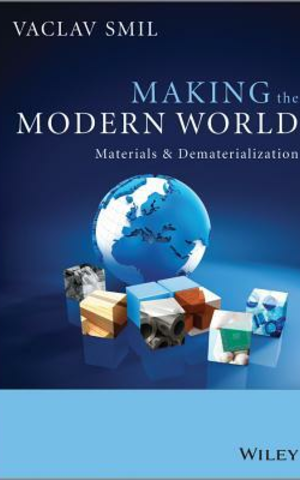
Making the Modern World: Materials and Dematerialization
- Book
- Jan 1, 2013
- #MaterialsScience #Civilization
How much further should the affluent world push its material consumption? Does relative dematerialization lead to absolute decline in demand for materials? These and many other ques...
Show More
Number of Pages: 229
ISBN: 1119942535
ISBN-13: 9781119942535
Mentions
See All
Bill Gates @BillGates
·
Dec 8, 2014
- Curated in The best books I read in 2014
One of Smil’s books makes my list of favorites pretty much every year. This time it’s his look at the world’s use of materials, from silicon to wood to plastic and cement. If anyone tries to tell you we’re using fewer materials, send him this book. With his usual skepticism and his love of data, Smil shows how our ability to make things with less material—say, soda cans that need less aluminum—makes them cheaper, which actually encourages more production. We’re using more stuff than ever.
Bill Gates @BillGates
·
Mar 18, 2015
- Curated in 6 books I recommended for TED 2015
The historian Vaclav Smil is probably my favorite living author, and I read everything he writes. In this book, Smil examines the materials we use to meet the demands of modern life, like cement, iron, aluminum, plastic, and paper. The book is full of staggering statistics. For example, China used more cement in just three years than the U.S. used in the entire 20th century! Above all, I love to read Smil because he resists hype. He’s an original thinker who never gives simple answers to complex questions.